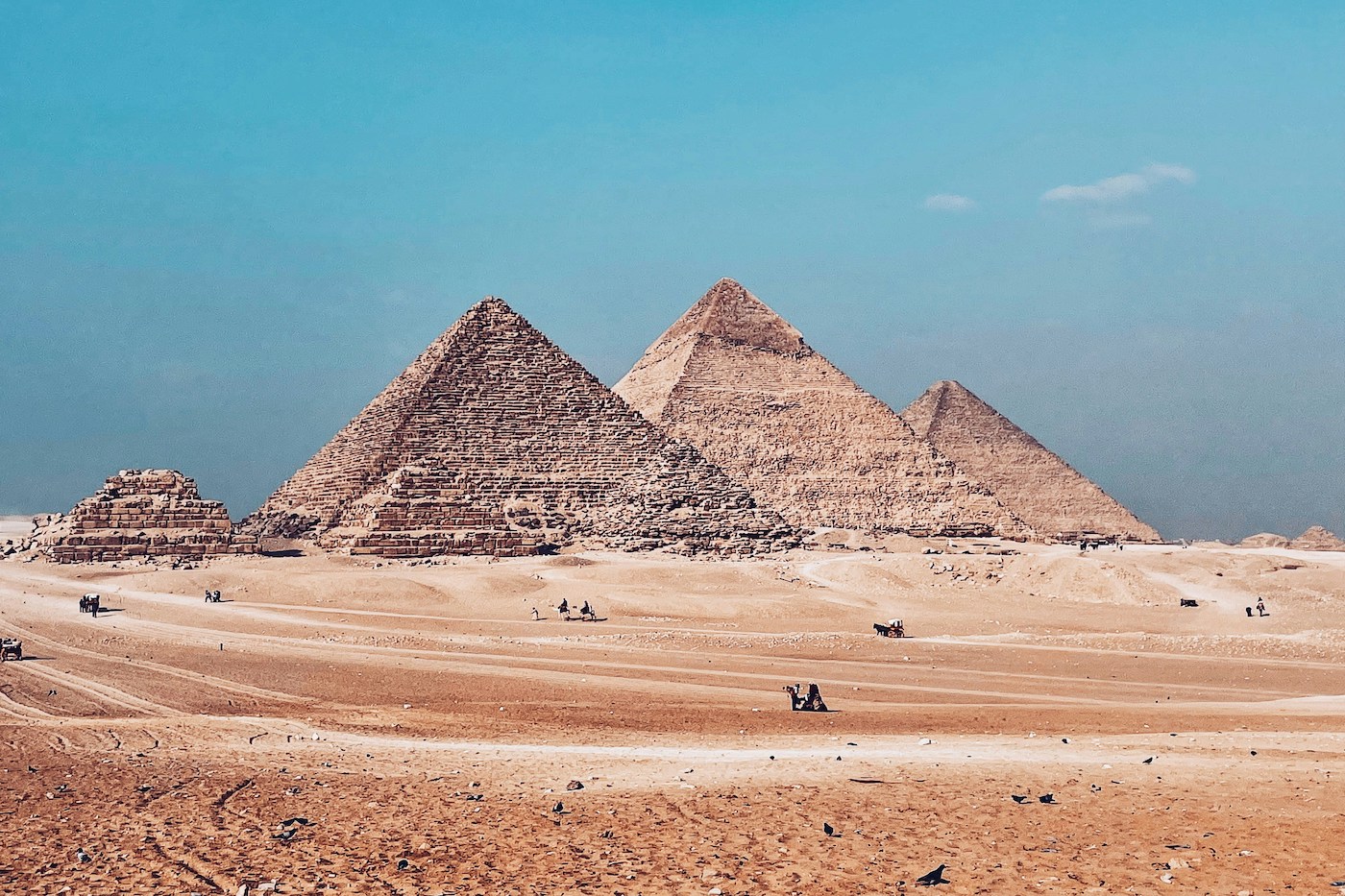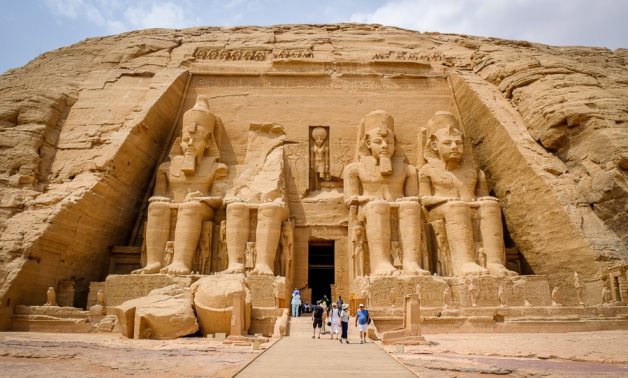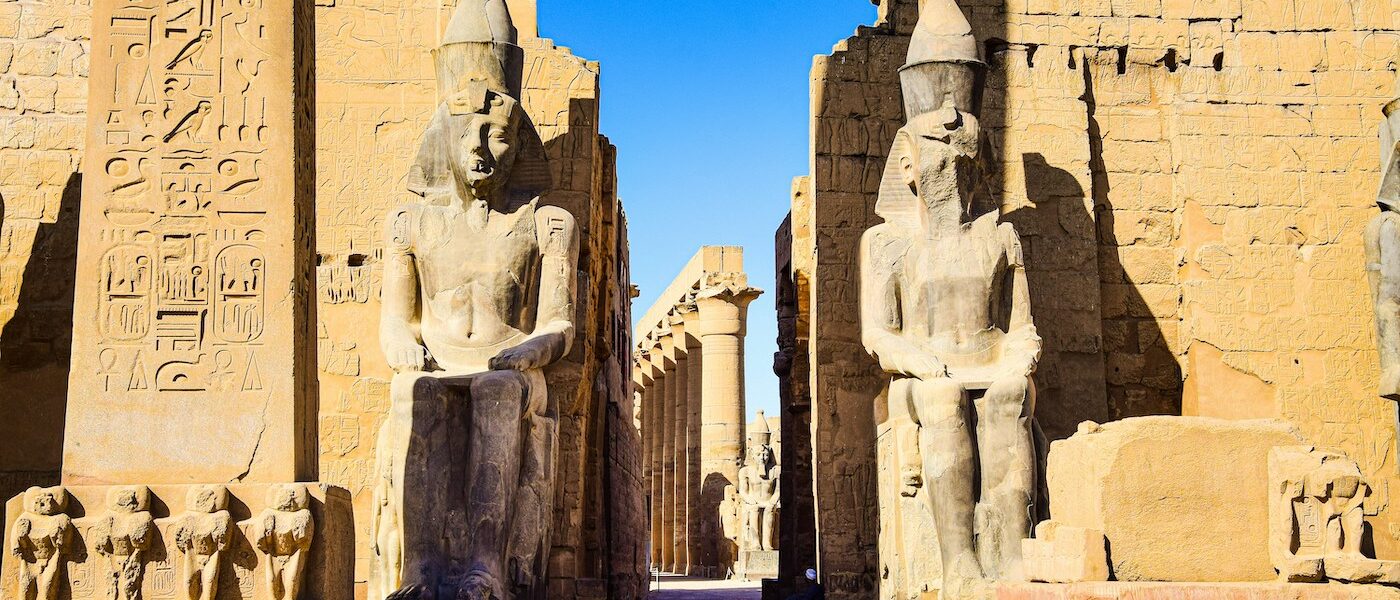The Majestic Temple of Horus at Edfu
A Monument of Ancient Egypt: The Temple Legacy
Located on the west bank of the Nile at Edfu near Aswan, the Temple of Horus stands as one of the best-preserved and most impressive sanctuaries of ancient Egypt. Built between 237 and 57 BC during the reign of the Ptolemaic dynasty, this temple is a testament to the grandeur of Egyptian architecture and religious practices. Its walls are adorned with detailed inscriptions that offer invaluable insights into the language, mythology, and religious beliefs of Hellenistic Egypt.
The Temple of Horus is not just a historical relic; it is a living narrative carved in stone, recounting the mythical stories and religious ceremonies that were central to the lives of the ancient Egyptians. Inscribed texts reveal details about the temple’s construction and its symbolic interpretation as the Island of Creation. Visitors to the temple can immerse themselves in the age-old conflict between Horus and Set, depicted through the sacred dramatic scenes carved on the walls.
One of the unique aspects of the Temple of Horus is its remarkable state of preservation. Unlike many other ancient monuments that have succumbed to the ravages of time, this temple was protected by the desert sands that filled its chambers after pagan worship was banned. Today, it stands as a beacon of history, offering a glimpse into an architectural style that was already archaic at the time of its completion.
Architectural Marvel: Design and Construction
The Temple of Horus at Edfu demonstrates the architectural prowess of the Ptolemaic period, following traditional pharaonic design while incorporating elements unique to its time. Initiated by Ptolemy III in 237 BC and completed by Ptolemy XII, the father of Cleopatra VII, this sandstone temple took 180 years to build. Despite its relatively recent construction compared to other ancient temples, its design and ornamentation closely adhere to pharaonic traditions, providing a link to Egypt’s distant past.
The temple’s structure includes a massive 36-meter-high pylon guarded by two imposing granite statues of Horus in the form of a falcon. These statues, along with colossal reliefs of Ptolemy XII depicted in classical pharaonic poses, create an impressive entrance. The temple’s outer and inner hypostyle halls, each supported by columns adorned with various floral capitals, further enhance its grandeur.
Inside, the temple is a labyrinth of chambers and halls, each with a specific ritual function. The outer hypostyle hall once housed a library for ritual texts and a sacristy for consecrated objects, while the inner hypostyle hall contained a laboratory where perfumes and incense were meticulously prepared. These intricately designed spaces highlight not only the temple’s architectural sophistication but also its role as a center of religious and daily activities.
Discovering Sacred Spaces: Key Areas of the Temple
Passing through the great pylon, visitors enter the Courtyard of Offerings, surrounded by 32 columns adorned with carved floral capitals. This open courtyard was a bustling center of religious activity, where offerings were made to the gods. The walls of the courtyard are decorated with reliefs depicting the Festival of the Beautiful Encounter, an important annual event celebrating the union of Horus of Edfu and Hathor of Dendara.
The temple’s first hypostyle hall, marked by a black granite statue of Horus, leads to two smaller chambers: the temple library and the Hall of Consecrations. These rooms were essential for the storage of sacred texts and ritual objects, reflecting the meticulous nature of Egyptian religious practices. The hall itself is decorated with reliefs narrating the temple’s founding and associated divine activities.
Beyond the hypostyle halls, visitors reach the Offering Chamber, where daily offerings of fruit, flowers, and other items were presented to the gods. This chamber opens onto the second antechamber, leading to the Sanctuary of Horus. Here, the polished granite sanctuary once housed the golden cult statue of Horus, symbolizing the divine presence in the temple. The replica wooden boat in front of the sanctuary recalls the festive processions that took place, celebrating the god’s journey.
Rediscovery and Preservation Efforts
The Temple of Horus was buried beneath sand and debris for centuries until its rediscovery by Auguste Mariette in the mid-19th century. Excavation efforts uncovered a temple that had been remarkably preserved by the desert sands, which had protected it from decay. This discovery was a milestone in Egyptology, as it provided a well-preserved example of Ptolemaic architecture and religious practices.
Today, the temple is a popular tourist destination, attracting visitors from around the world who come to admire its grandeur and historical significance. The entrance to the temple complex is now lined with shops selling souvenirs, and a modern visitor center offers amenities such as a cafeteria, clean restrooms, and a 15-minute film on the temple’s history. These facilities enhance the visitor experience, making it easier to appreciate the temple’s rich heritage.
The preservation of the Temple of Horus is a testament to the dedication of archaeologists and historians who have worked tirelessly to maintain its integrity. Ongoing conservation efforts ensure that this magnificent structure remains a valuable educational resource and a source of inspiration for future generations. Visiting the temple allows one to connect with the ancient past and gain a deeper understanding of the cultural and religious heritage of ancient Egypt.
Immersive Experience: Visit the Temple
Visiting the Temple of Horus is a journey through time, offering a unique opportunity to explore the intricate details of ancient Egyptian architecture and religion. As visitors wander through the various chambers and halls, they can observe the craftsmanship and artistry that went into creating this magnificent structure. The towering columns, adorned with intricate carvings, and the grandiose reliefs depicting mythological scenes transport visitors to a bygone era.
One of the highlights of a visit to the temple is the ascent to the roof, which offers breathtaking views of the Nile and the surrounding fields. Although the roof is currently closed to visitors, the experience of standing atop this ancient structure, imagining the bustling activity that took place below, is a powerful reminder of the temple’s historical significance. The panoramic view offers a unique perspective on the landscape, which has remained largely unchanged for millennia.
The Sanctuary of Horus, with its polished granite sanctuary and replica wooden boat, is a focal point of the temple. This sacred space, once home to the golden cult statue of Horus, represents the spiritual heart of the temple. The careful design and preservation of this area underscores the importance of religious rituals and the reverence with which the ancient Egyptians treated their deities. The surrounding reliefs and inscriptions offer insight into the ceremonial practices that were integral to the temple’s daily activities.
Cultural Significance: Horus and Egyptian Mythology
The Temple of Horus at Edfu is not just an architectural marvel; it is a cultural treasure that sheds light on the mythology and religious beliefs of ancient Egypt. Horus, the falcon-headed god, was a central figure in Egyptian mythology, representing royalty, protection, and vengeance. The temple’s inscriptions and reliefs vividly depict the story of Horus’s battle with Set, a narrative that symbolized the eternal struggle between good and evil.
Horus was worshipped as the vengeful son of Isis and Osiris, embodying the ideals of justice and retribution. The temple’s dedication to Horus reflects the importance of this deity in the lives of the ancient Egyptians. The sacred drama scenes depicting the mythical conflict between Horus and Set were not only religious rituals but also a means of reinforcing the moral and ethical values upheld by society.
The temple’s role as a cult center for Horus underscores its importance in the religious landscape of ancient Egypt. Edfu was considered the “home” of Horus, and the temple served as a focal point for worship and pilgrimage. The annual celebrations and festivals held at the temple attracted devotees from far and wide, contributing to the cultural and religious cohesion of the region. The preservation of these traditions through the temple’s inscriptions and architecture provides a valuable link to Egypt’s rich past.
Modern Meaning and Visitor Experience
Today, the Temple of Horus at Edfu continues to captivate visitors with its historical significance and architectural grandeur. As a UNESCO World Heritage Site, it attracts researchers, historians, and tourists eager to explore the rich cultural heritage of ancient Egypt. The temple’s well-preserved condition offers a unique opportunity to study and appreciate the artistic and architectural achievements of the Ptolemaic period.
The visitor experience is enhanced by the modern amenities offered within the temple complex. The visitor center, with its informative film and comfortable facilities, ensures that tourists can fully immerse themselves in the history and significance of the temple. Guided tours and educational programs further enrich the experience, offering insights into the temple’s construction, religious practices, and mythological tales.
The Temple of Horus is not just a relic of the past; it is a living testament to the enduring legacy of ancient Egyptian civilization. By preserving and promoting this cultural treasure, we honor the achievements of the past and ensure that future generations can continue to learn and draw inspiration from this remarkable monument. The temple stands as a symbol of the resilience and creativity of the ancient Egyptians, reminding us of the timeless beauty and significance of their contributions to human history.







